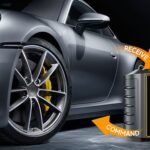Experiencing a check engine light in your vehicle can be concerning, especially after recent repairs. One common diagnostic trouble code (DTC) that may surface is P2099, indicating a “Post Catalyst Fuel Trim System Too Rich Bank 2”. This code suggests that the downstream oxygen sensor on Bank 2 is detecting an excessively rich fuel mixture after the catalytic converter.
Understanding what this means is crucial for effective troubleshooting. The downstream O2 sensor’s role is to monitor the efficiency of the catalytic converter by measuring the oxygen levels in the exhaust gases after they have passed through the converter. When the system is running rich, it means there’s too much fuel and not enough oxygen in the exhaust. Code P2099 specifically points to Bank 2 of your engine, which is important for vehicles with multiple cylinder banks.
Several factors can trigger a P2099 code. While a genuinely rich condition could be present, often the issue lies with sensor readings or related systems. Potential causes include exhaust leaks after the catalytic converter, a faulty downstream O2 sensor on Bank 2, or issues with the fuel delivery system that might be indirectly affecting the sensor readings. It’s also worth considering less common culprits such as PCM (Powertrain Control Module) malfunctions, although these are rarer.
When diagnosing a P2099 code, a systematic approach is best. Start with a visual inspection of the exhaust system for any leaks downstream of the catalytic converter on Bank 2. Next, using an OBDII scanner, check live data readings from the downstream O2 sensor on Bank 2. Pay close attention to the fuel trim values, both short-term and long-term. Significantly high positive fuel trim values, as observed in some cases reaching nearly 30%, can be indicative of underlying issues that require further investigation.
While it might be tempting to clear the code and see if it returns, it’s generally more helpful to gather diagnostic data while the code is active. This information can provide valuable clues for pinpointing the root cause. If you’re not experienced in automotive diagnostics, seeking professional assistance from a qualified mechanic is advisable. They can perform thorough testing and accurately diagnose the cause of the P2099 code, ensuring that repairs are carried out effectively and efficiently.

